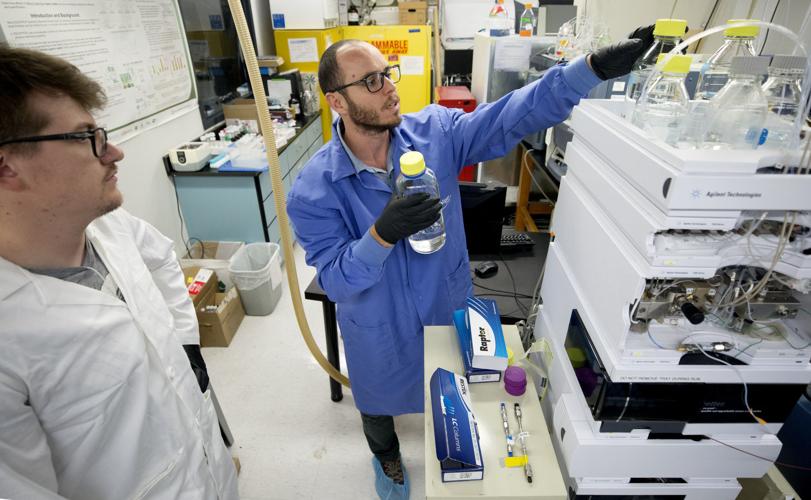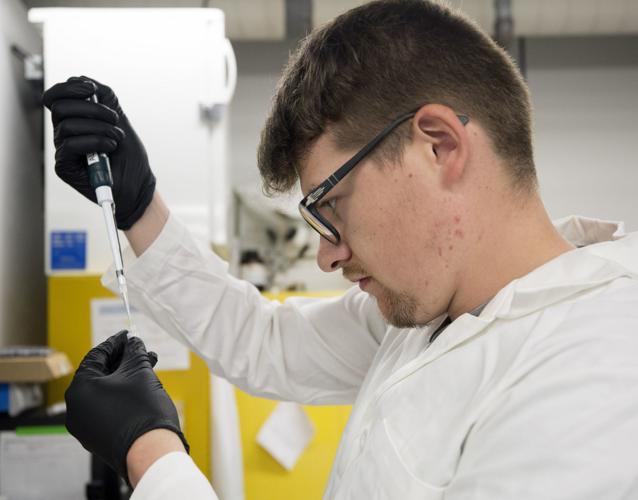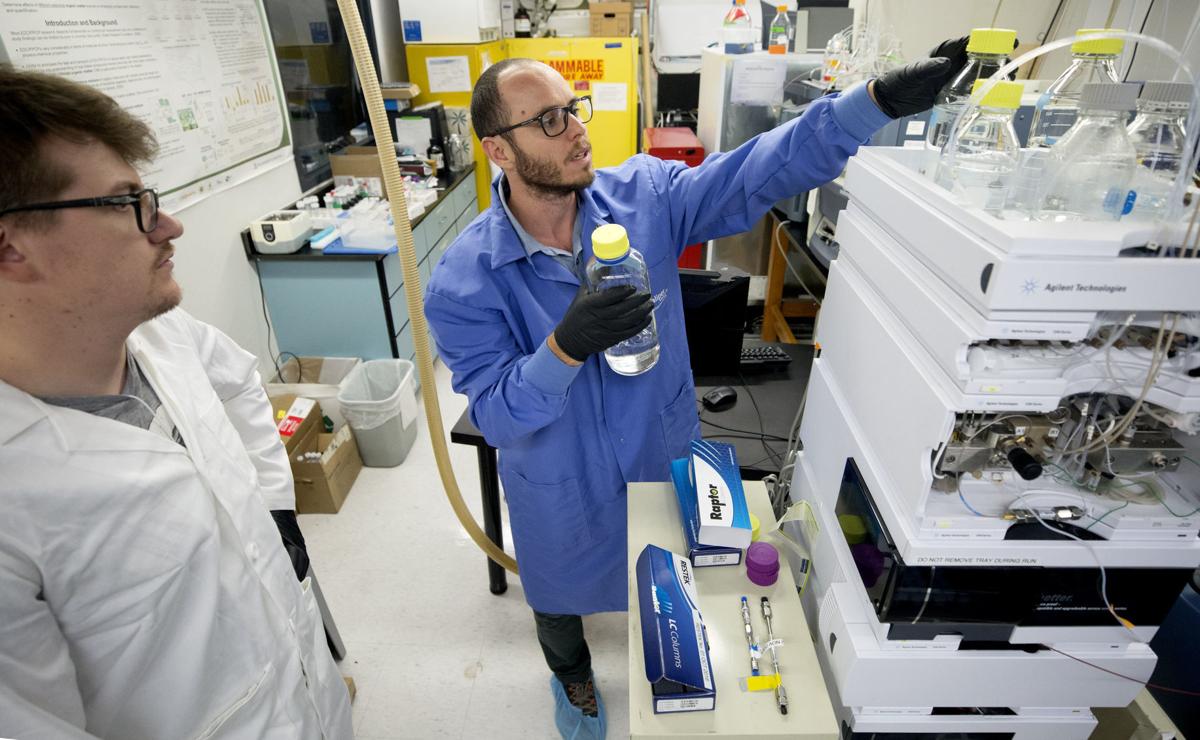In September 2018, Tucson Water realized it had been sending water with PFAS pollutants in it to thousands of customers. The utility started work to correct the problem, but perfluorinated chemicals are not easy to remove.
Now, Reyes Sierra, a chemical and environmental engineering professor at the University of Arizona, is leading a team of scientists to develop a more efficient adsorbent material to filter out PFAS chemicals from water.
The pollutants have become the subject of local and national concern this year as they’ve been discovered in drinking wells around the country, including in Tucson and Marana.
These PFAS compounds repel water and oil, and were once popular in everything from nonstick frying pans to firefighting foam. They tend to accumulate in the bodies of animals and people, and recent research has linked PFAS compounds to a number of diseases.
“The conventional methods (to remove PFAS from water) are very expensive because these chemicals are so very difficult to treat,” Sierra said. “We decided to work on this because there’s a need for new methods, and we have the expertise and interest in this type of work.”
Filtering out chemicals
Current adsorbent methods typically use granular activated carbon, which Sierra said does filter out PFAS, but it takes a lot of activated carbon to reduce PFAS levels to what the EPA recommends.
The team is working to come up with a material that will bind strongly to the chemicals, and Sierra said it will use sorption, like activated carbon does. Sorption is a process in which one compound is strongly attracted to another, and is often used to remove contaminants as the contaminant “sticks” to the sorbent.
“It is also a sorptive method like activated carbon, but the sorbents we are studying are completely different than activated carbon, they are materials we are developing (and) making in our lab, and they are materials that are designed to combine two different mechanism of adsorption,” Sierra said.
The team, which includes Jim Field, a professor in chemical and environmental engineering; Jon Chorover, professor and department head for soil, water and environmental science; Leif Abrell, an associate research scientist in soil, water and environmental science; and Jim Hatton, a senior engineer with Jacobs Engineering Group, started working on the research in July 2018.
They are in the initial phase of the three-year project, which is funded by a $1.2 million grant from the U.S. Department of Defense’s Strategic Environmental Research and Development Program.
“We are preparing, synthesizing the sorbents and then characterizing them, what do they look like, how large are the particles, what is the chemical composition,” Sierra said. “We are doing preliminary work to determine what is the ability of the sorbents to adsorb the PFAS, how important is changes in pH. ... We are narrowing it down so we can select the most promising of the sorbents. Then we will move from small-scale experiments to more realistic experiments.”
Yaniv Olshansky, a postdoctoral research associate in soil, water and environmental science who also works on the project, said current experiments are using synthetic water that they put PFAS compounds into themselves.
“We add the compound … and some representative salts, and then we test how our polymer that we synthesized absorbed the compound. So right now it’s a very basic solution, just the compound and one salt, just to see how the polymer interacts with the contaminant,” Olshansky said.
Future experiments will use water from different military bases, provided by the Defense Department, so the team can test how well their filter will attract PFAS if there are many other chemicals present.
“That water is more complex, so we will see how our chemicals are doing when they have to compete with other chemicals in the groundwater,” Sierra said. “It could be contaminants, it could be something simple like natural organic matter that also likes to stick.”

Anton Gomeniuc, a senior in chemical engineering, prepares a water sample for testing as University of Arizona researchers seek a better way to scrub PFAS chemicals from water.
Worldwide problem
Another problem the team is working to solve is regeneration, Olshansky said.
Activated carbon is costly to replace or to clean of contaminants for reuse, so the team is exploring using pH levels to make their polymer filter easier to reuse. Olshansky said that perhaps one pH range allows the filter material to absorb well, while a different pH range causes the material to release the PFAS again.
“We’re still developing them. Each polymer you can synthesize in different ways, you can tweak them a little bit,” Olshansky said. “The goal is to create something that will work and that will be able to be regenerated in a reasonable way.”
Sierra said this kind of research is not limited to the UA, or even to the United States. Filtering chemicals from groundwater, including PFAS, is a worldwide, complicated problem.
“It’s a story that we’ve seen many times in the last decade. We are starting to use chemicals, we think the chemicals are benign, and later on it turns out that we have contaminated the environment, it turns out the chemicals are going to be there for a very long time and then we learn that they are toxic,” Sierra said.
“It’s a pity that we don’t learn from the past and that we don’t do a much more careful testing of the chemicals before we use them in bulk quantities.”
Right now, the EPA’s health advisory level for PFAS/PFOA chemicals in drinking water is simply a recommendation, but Sierra said it’s completely possible that the EPA will establish a regulatory label for the chemicals, meaning utilities will be legally required to filter their water to comply with the level the EPA determines is safe.
“Drinking water facilities are not required to comply to this advisory level, but many companies like to sell water and they want to protect their customers,” Sierra said. “So they’re moving forward to modify their treatment plants or build new treatment plants, like what is happening right now in Marana.”






